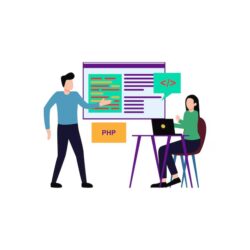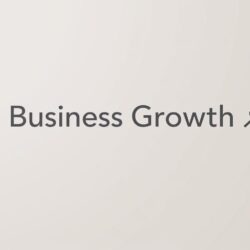Introduction to Sustainability Reporting Software
In today’s business landscape, sustainability is no longer just a trend — it’s a necessity. As global awareness about environmental, social, and governance (ESG) factors continues to grow, companies are under increasing pressure to track, manage, and report their sustainability performance accurately. This has led to a surge in demand for sustainability reporting software — powerful tools designed to simplify ESG data collection, analysis, and reporting. The best sustainability reporting software not only helps businesses meet compliance requirements but also enables them to make data-driven decisions that align with their environmental and social goals.
What is Sustainability Reporting Software?
Sustainability reporting software is a digital solution that helps organizations gather, analyze, and report data related to their environmental impact, social initiatives, and governance practices. It provides a structured way to monitor sustainability metrics like carbon emissions, energy use, waste management, diversity, and community engagement. These platforms are essential for companies that want to meet regulatory standards, follow frameworks such as GRI (Global Reporting Initiative) or SASB (Sustainability Accounting Standards Board), and communicate their sustainability progress to stakeholders transparently.
Why Businesses Need Sustainability Reporting Software
Businesses of all sizes are recognizing the value of sustainability not just for the planet, but also for their long-term success. Investors, consumers, and governments increasingly demand transparency regarding corporate ESG performance. Sustainability reporting software simplifies this process by automating data collection, improving accuracy, and ensuring compliance with global standards. It eliminates the inefficiencies of manual data tracking, minimizes reporting errors, and provides insights that can lead to improved operational efficiency and reduced environmental footprint.
Key Benefits of Using Sustainability Reporting Software
1. Accurate Data Collection and Integration
Sustainability data is often scattered across multiple departments and systems. The best sustainability reporting software integrates with existing enterprise systems like ERP, HR, and finance platforms to centralize ESG data. This ensures consistency, accuracy, and transparency across all sustainability reports.
2. Compliance and Standardized Reporting
Global reporting frameworks like GRI, SASB, CDP, and TCFD require businesses to disclose detailed sustainability information. Top-tier sustainability reporting software includes pre-built templates aligned with these frameworks, helping organizations produce compliant and standardized reports effortlessly.
3. Real-Time Performance Tracking
With advanced analytics and dashboards, businesses can track sustainability performance in real time. This allows decision-makers to identify areas of improvement, monitor progress toward goals, and make timely interventions when targets are at risk.
4. Improved Stakeholder Communication
Transparency is key to building trust. Sustainability reporting software makes it easier to share accurate and visually appealing reports with investors, customers, and employees, showcasing a company’s genuine commitment to sustainability.
5. Risk Management and Strategic Decision-Making
By analyzing ESG data, companies can identify potential risks related to environmental compliance, resource scarcity, or reputation. This helps organizations make strategic decisions that minimize risk and improve resilience.
Top Features to Look for in the Best Sustainability Reporting Software
Data Integration Capabilities
A great sustainability reporting platform should easily integrate with multiple data sources — including utility providers, internal systems, and third-party APIs — to automate data collection and reduce manual workload.
Customizable Dashboards
Dynamic dashboards allow users to visualize performance metrics through interactive charts and graphs. This makes it easy to interpret complex sustainability data and share insights across teams.
Compliance Support
Built-in support for major sustainability frameworks ensures organizations can easily align their reports with global standards without additional customization.
AI-Powered Analytics
Artificial Intelligence (AI) can help predict future sustainability trends, identify inefficiencies, and recommend data-driven actions to improve sustainability outcomes.
Cloud-Based Accessibility
Cloud-based sustainability reporting software provides flexibility, scalability, and accessibility from any location, enabling remote teams to collaborate seamlessly.
Automated Reporting and Audit Trails
Automation reduces the time required to prepare reports and maintains detailed audit trails for verification, which is essential for internal and external audits.
Top Sustainability Reporting Software in 2025
1. SpheraCloud
SpheraCloud is one of the most advanced sustainability reporting platforms available today. It offers comprehensive tools for ESG data management, risk analysis, and compliance tracking. Its user-friendly interface, AI-driven analytics, and robust integration capabilities make it ideal for enterprises that prioritize efficiency and accuracy.
2. Diligent ESG
Diligent ESG enables organizations to collect and report ESG data with ease. It supports leading frameworks like GRI and SASB and provides real-time performance dashboards. Its powerful analytics help companies understand their ESG impact and make smarter sustainability decisions.
3. IBM Envizi
IBM Envizi Sustainability Performance Management software is designed to help businesses streamline their sustainability and energy reporting processes. It integrates data from multiple systems and delivers advanced analytics that enhance sustainability performance visibility.
4. Workiva
Workiva’s sustainability reporting software is known for its compliance-oriented features and seamless collaboration tools. It helps companies automate ESG reporting, align with multiple disclosure frameworks, and reduce the complexity of data consolidation.
5. Plan A
Plan A is a fast-growing sustainability platform that combines data-driven insights with carbon accounting and ESG management tools. It offers real-time data visualization, science-based targets, and automated sustainability reporting, making it a great choice for businesses aiming to achieve net-zero goals.
6. EcoVadis
EcoVadis focuses on sustainability performance ratings and supply chain transparency. Its reporting solutions help companies evaluate supplier sustainability performance and generate detailed ESG assessments that support responsible sourcing.
7. Persefoni
Persefoni is widely recognized for its carbon management capabilities. It simplifies GHG (Greenhouse Gas) accounting and reporting, allowing organizations to track emissions data and align with global climate disclosure frameworks.
How to Choose the Right Sustainability Reporting Software for Your Business
Identify Your Reporting Needs
Before choosing a solution, determine your sustainability goals, data collection needs, and target frameworks. A small company might need a basic tool for tracking emissions, while a large enterprise may require an integrated platform that handles complex ESG data.
Consider Scalability and Customization
Choose software that can grow with your business. Scalable platforms allow organizations to add new metrics, integrate additional systems, and expand reporting capabilities as sustainability programs evolve.
Evaluate Ease of Use and Training
Even the most advanced platform is ineffective if it’s difficult to use. Ensure that the software provides a simple interface, training support, and detailed documentation for quick adoption.
Check for Regulatory Compliance
The software should support local and international sustainability reporting standards, especially if your business operates globally.
Assess Integration and Automation Capabilities
Integration with existing tools (like SAP, Oracle, or Salesforce) and automation of data entry, validation, and reporting processes are crucial for efficiency and accuracy.
Look for Data Security and Privacy
Sustainability data can be sensitive. Ensure the software complies with data protection regulations and includes encryption and access control features.
The Future of Sustainability Reporting Software
As sustainability becomes central to business strategy, the role of technology in ESG reporting will continue to expand. Artificial intelligence, blockchain, and machine learning will play a key role in improving data transparency, automating compliance, and ensuring real-time sustainability performance tracking. Companies that adopt the best sustainability reporting software today will be well-positioned to thrive in an eco-conscious future, gaining both competitive and reputational advantages.
Conclusion
Sustainability reporting software is more than just a compliance tool — it’s a catalyst for responsible growth and innovation. The best sustainability reporting software empowers businesses to measure what matters, minimize environmental impact, and make strategic decisions rooted in transparency and accountability. As global sustainability expectations continue to rise, investing in the right ESG reporting platform is essential for every forward-thinking organization that aims to create lasting value for the planet, people, and profit.



